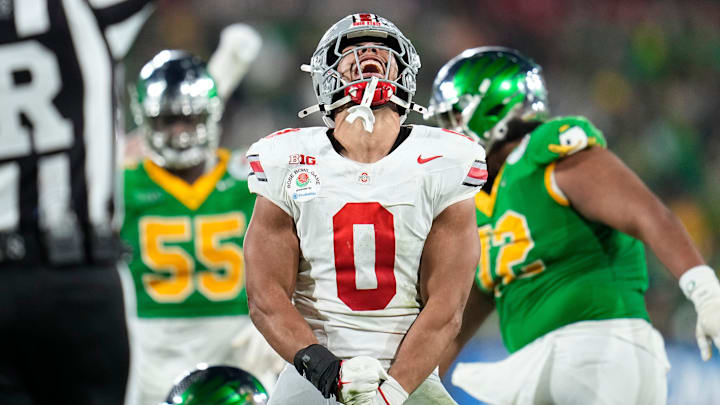Stars matter. The record shows that no team in the last 16 seasons has won a national championship without a blue-chip ratio of at least 50%, and the three teams that hovered closest to that mark had a first-round quarterback.
Created by Bud Elliott of CBS/247Sports, the blue-chip ratio measures how many four- and five-star commits a program has versus two- and three-stars. Every national champion since 2011 has had more four- and five-stars than three-stars and below. The metric is undefeated.
Last season, Ohio State won the national championship with an all-time record blue-chip ratio of 90%.
Including Oregon, 18 teams meet that threshold in 2025.
Blue-Chip Ratio 2025 🚨
— CBS Sports College Football 🏈 (@CBSSportsCFB) July 17, 2025
The 18 CFB teams can actually win the national championship in 2025 🏆@BudElliott3 breaks down the teams who have recruited well enough to win it all 🔗 https://t.co/740WBvmF25 pic.twitter.com/Du7ZwtKDgO
Hard work, culture, coaching, health and luck all matter in a college football season, Elliott points out, but to win it all a team has to have a baseline of talent, players who are bigger, stronger and faster than the opponent.
Non-blue-chip teams have reached the playoffs, but winning on the highest stage is 100% correlated with a +50% ratio. The Ducks enter this season with 78% blue-chip recruits over the last four years, the fifth-highest ratio in the nation.
The blue-chip ratio isn't intended to predict individual games and shouldn't be used as a gambling tool-- it doesn't work that way. But it does identify the 18 teams with the foundation of talent necessary to win a national title.
Of course, teams outperform or underperform their potential every year. Some programs are notorious for collapsing in big games or not living up to their hype. That's where coaching comes in.
Great quarterback play is a tremendous equalizer in the talent equation. Elliott notes that Oregon came close to busting the model in 2014, with a sub-50% ratio but a transcendent quarterback, Heisman Trophy winner Marcus Mariota.
The CBS analyst notes, "Transfers are not factored into the primary Blue-Chip Ratio. Through four years of intense portal activity, no team has won the national title by building through transfers."
A few schools are actively trying to contest that part of the theory, but so far no one has succeeded. The foundation of any national championship contender remains high school recruiting.
If anything, recruiting's grip on winning titles has grown stronger in the playoff era. Here are the last five national champions and their blue-chip ratios based on the 247Sports Composite:
2024: Ohio State (90%)
2023: Michigan (54%)
2022: Georgia (77%)
2021: Georgia (80%)
2020: Alabama (83%)
Michigan's blue-chip ratio is lower than most, but explained by two key factors. One, this was a Covid-era program with a higher rate of extra-year seniors and players who passed up the NFL draft and two, the Wolverines featured a first-round quarterback in JJ McCarthy.
In 2025, five Big Ten teams meet the blue-chip threshold, Ohio State, Oregon, Penn State, Michigan and USC. Of those, only the Nittany Lions and the Trojans have a returning starting quarterback. Nine teams from the SEC make the cut.
For entertainment purposes only, Washington's 2025 blue-chip ratio is 21.3%.
